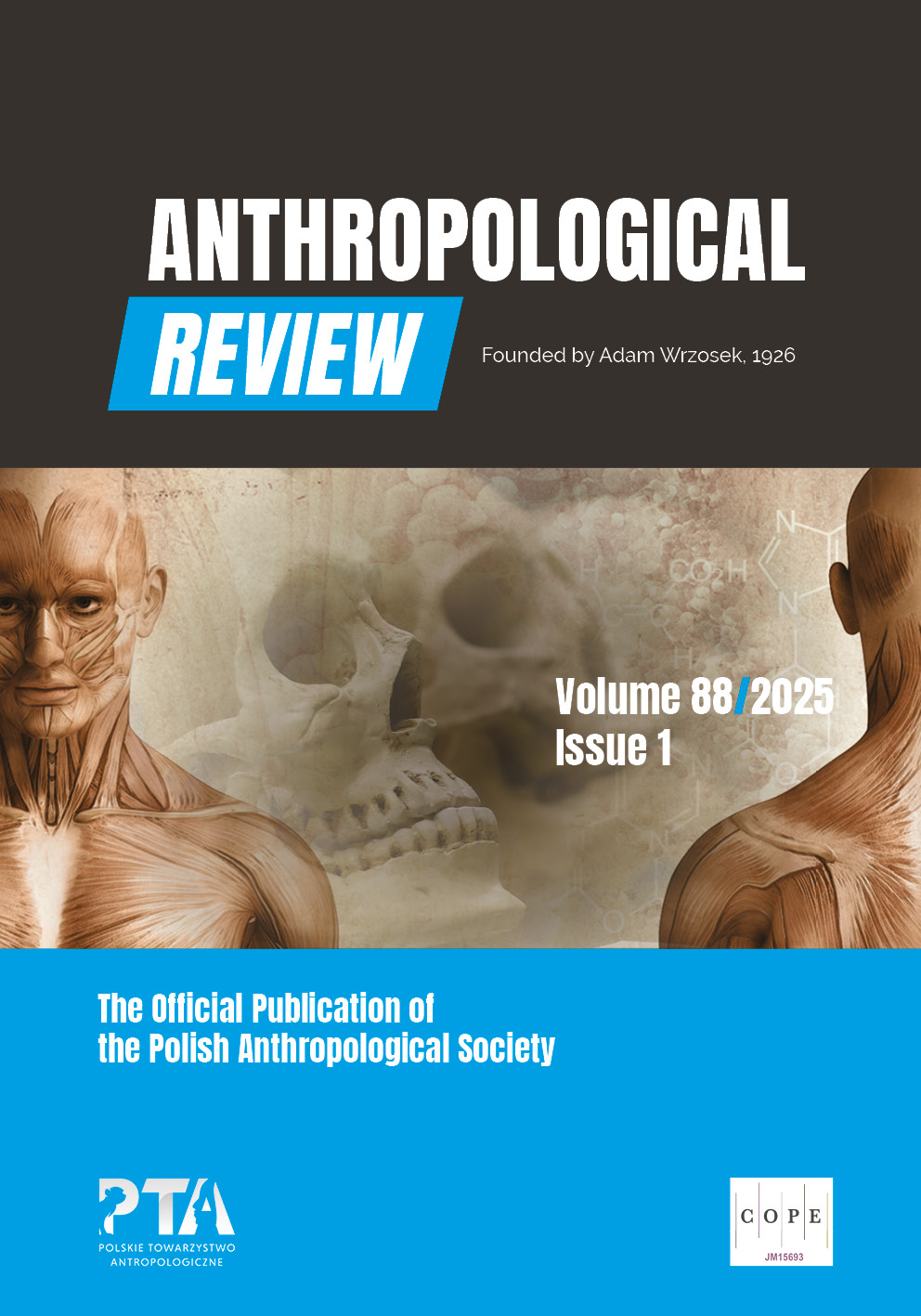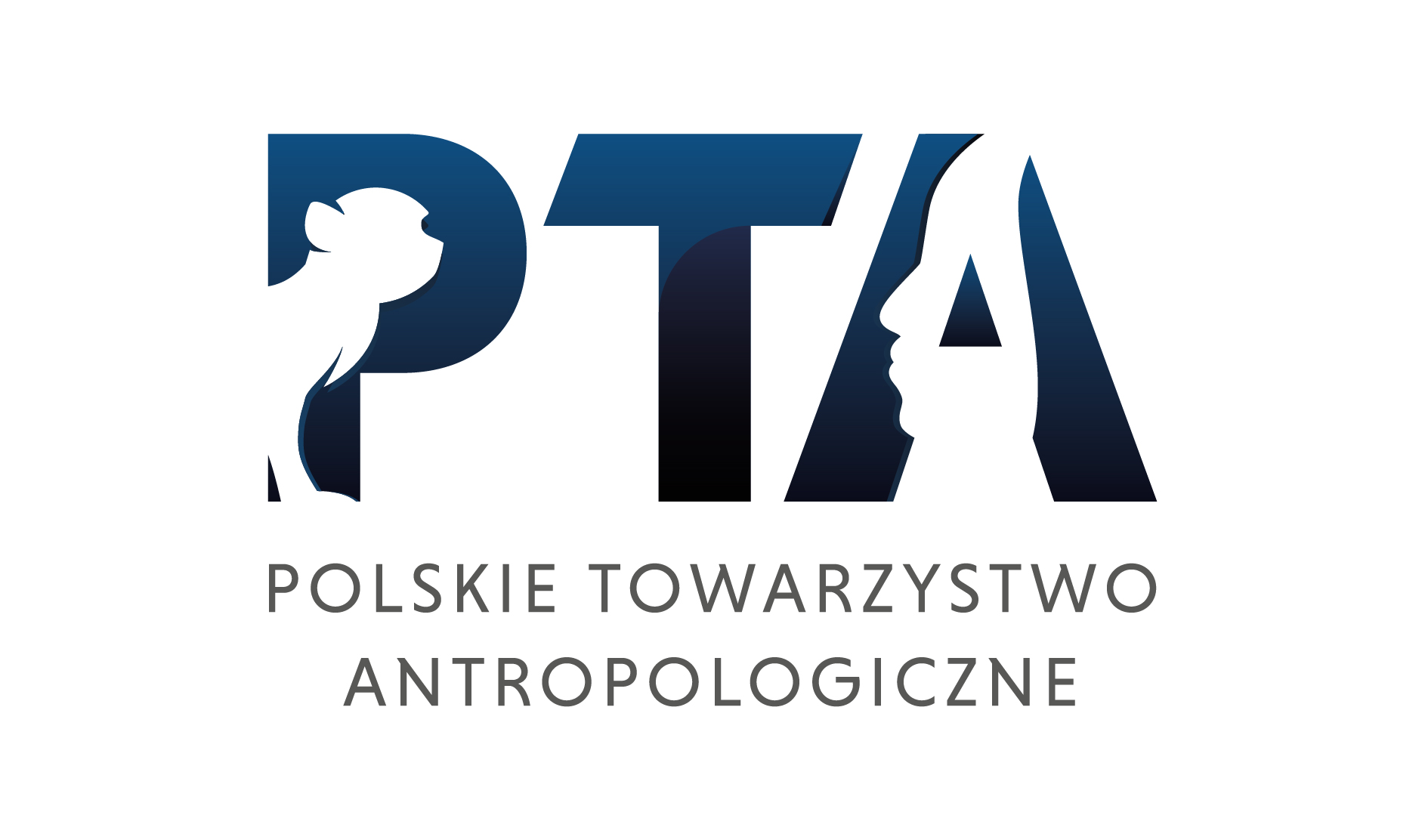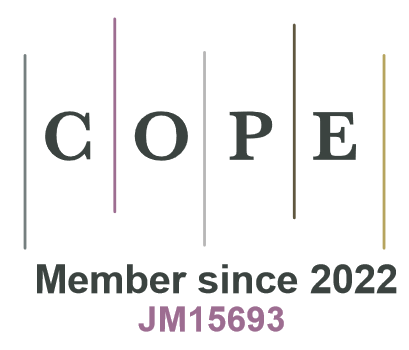Prevalence of Undernutrition and its Socio-Demographic Determinants among Rural Bengalee Muslim Preschool Children of Bankura District, West Bengal, India
DOI:
https://doi.org/10.18778/1898-6773.88.1.06Keywords:
Undernutrition, Socio-demographic factors, Muslim, Preschool, ChildrenAbstract
Despite recent global economic growth, the high prevalence of child undernutrition is an urgent public health issue in low and middle-income countries, including India. Moreover, one-third of infant mortality is associated with undernutrition. The present cross-sectional study aims to report the burden of undernutrition and to explore its association with socio-demographic variables among the Bengalee Muslim preschool children of Bankura district, West Bengal, India. This present study was conducted among 800 preschool children (400 males and 400 females) aged 12 to 59 months. The children were selected using a systematic random sampling method, and the sample size was estimated using standard formula. Descriptive, parametric, non-parametric, and inferential statistical analyses were performed accordingly. Males were taller and heavier than females. Significant age variations in mean height and weight were found among the study participants. The overall prevalence of stunting, wasting, and underweight was 23.0%, 30.5%, and 36.0%, respectively. The results of the chi-square test showed that all the socio-demographic variables were significantly associated with the nutritional status of these children. A multivariate logistic regression revealed that non-exclusive breastfeeding, higher birth order, and the lower mothers’ age at childbirth were the significant predictors of stunting. Low family income, large family size, and low maternal educational status were the significant predictors of wasting. Moreover, low family income, non-exclusive breastfeeding, and mothers’ age at childbirth were significant predictors of underweight. The findings of the present study revealed that there were numerous determinants of undernutrition among the Bengalee Muslim preschool children. Therefore, the appropriate government and non-government agencies should adopt the policy for an income-generating scheme to enhance household income, awareness of exclusive breastfeeding, family planning, adult education programmes, and surveillance against child marriage.
Downloads
References
Abraham EM, Martin AM, Cofie O, Raschid-Sally L. 2015. Urban households’ access to water for livelihoods enhancement in Accra, Ghana. Waterlines 34(2):139–155. https://doi.org/10.3362/1756-3488.2015.014
View in Google Scholar
DOI: https://doi.org/10.3362/1756-3488.2015.014
Abuya BA, Ciera J, Kimani-Murage E. 2012. Effect of mother’s education on child’s nutritional status in the slums of Nairobi. BMC Paediatr 12(80):1–10. https://doi.org/10.1186/1471-2431-12-80
View in Google Scholar
DOI: https://doi.org/10.1186/1471-2431-12-80
Ahmed MM, Hokororo A, Kidenya BR, Kabyemera R, Kamugisha E. 2016. Prevalence of undernutrition and risk factors of severe undernutrition among children admitted to Bugando Medical Centre in Mwanza, Tanzania. BMC Nutr 2(49):1–6. https://doi.org/10.1186/s40795-016-0090-6
View in Google Scholar
DOI: https://doi.org/10.1186/s40795-016-0090-6
Akter K. 2021. The association between exclusive breastfeeding and nutritional status among infants under six months of age in Bangladesh: A secondary analysis of Bangladesh Demographic and Health Survey.
View in Google Scholar
Ali Z, Saaka M, Adams AG, Kamwininaang SK, Abizari AR. 2017. The effect of maternal and child factors on stunting, wasting and underweight among preschool children in Northern Ghana. BMC Nutr 3(1):1–13. https://doi.org/10.1186/s40795-017-0154-2
View in Google Scholar
DOI: https://doi.org/10.1186/s40795-017-0154-2
Asfaw M, Wondaferash M, Taha M, Dube L. 2015. Prevalence of undernutrition and associated factors among children aged between six to fifty nine months in Bule Hora district, South Ethiopia. BMC Public Health 15(41):1–9. https://doi.org/10.1186/s12889-015-1370-9
View in Google Scholar
DOI: https://doi.org/10.1186/s12889-015-1370-9
Babar NF, Muzaffar R, Khan MA, Imdad S. 2010. Impact of socioeconomic factors on nutritional status in primary school children. J Ayub Med Coll Abbottabad 22(4):15–8.
View in Google Scholar
Benson T, Shekar M. 2006. Trends and Issues in Child Undernutrition. The World Bank 87–106.
View in Google Scholar
Bhattacharya A, Pal B, Mukherjee S, Roy SK. 2019. Valoración del estado nutricional mediante variables antropométricas mediante análisis multivariado. BMC Public Health 19:1–9. https://doi.org/10.1186/s12889-019-7372-2
View in Google Scholar
DOI: https://doi.org/10.1186/s12889-019-7372-2
Black RE, Victora CG, Walker SP, Bhutta ZA, Christian P, De Onis M, et al. 2013. Maternal and child undernutrition and overweight in low-income and middle-income countries. Lancet 382:427–51. https://doi.org/10.1016/S0140-6736(13)60937-X
View in Google Scholar
DOI: https://doi.org/10.1016/S0140-6736(13)60937-X
Brown ME, Backer D, Billing T, White P, Grace K, Doocy S, et al. 2020. Empirical studies of factors associated with child malnutrition: highlighting the evidence about climate and conflict shocks. Food Secur 12:1241–52. https://doi.org/10.1007/s12571-020-01041-y
View in Google Scholar
DOI: https://doi.org/10.1007/s12571-020-01041-y
Census of India. 2011. District Census Handbook: West Bengal. Directorate of Census Operations.
View in Google Scholar
Chowdhury TR, Chakrabarty S, Rakib M, Saltmarsh S, Davis KA. 2018. Socio-economic risk factors for early childhood underweight in Bangladesh. Glob Health 14(54):1–12. https://doi.org/10.1186/s12992-018-0372-7
View in Google Scholar
DOI: https://doi.org/10.1186/s12992-018-0372-7
Cochran WG. 1963. Sampling Techniques. Wiley, New York.
View in Google Scholar
Devine J, Wood G, Goto R, da Corta L. 2014. Health and Wellbeing in the Lives of the Extreme Poor. DFID, GoB. http://r4d.dfid.gov.uk/Output/199586/Default.aspx
View in Google Scholar
Dharmaraj A, Ghimire A, Chinnaiyan S, Tiwari AK, Barik RK. 2021. Comparison of Growth in Children of 6 to 59 Months of Age According to Birth Order: Insights from the National Family Health Survey-4. J Clin Diagnos Res 15(8):25–32. https://doi.org/10.7860/JCDR/2021/49080.15301
View in Google Scholar
DOI: https://doi.org/10.7860/JCDR/2021/49080.15301
Dhingra S, Pingali PL. 2021. Effects of short birth spacing on birth-order differences in child stunting: Evidence from India. Proc Natl Acad Sci 118(8):1–8. https://doi.org/10.1073/pnas.2017834118
View in Google Scholar
DOI: https://doi.org/10.1073/pnas.2017834118
Duminy J, Ezeh A, Galea S, Harpham T, Montgomery MR, Salas JMI, et al. 2023. Demographic change and urban health: Towards a novel agenda for delivering sustainable and healthy cities for all. F1000Research 12(1017). https://doi.org/10.12688/f1000research.139309.2
View in Google Scholar
DOI: https://doi.org/10.12688/f1000research.139309.1
Fall CHD, Sachdev HS, Osmond C, Restrepo-Mendez MC, Victora C, Martorell R, et al. 2015. Association between maternal age at childbirth and child and adult outcomes in the offspring: A prospective study in five low-income and middle-income countries (COHORTS collaboration). Lancet Glob Health 3:e366–77. https://doi.org/10.1016/S2214-109X(15)00038-8
View in Google Scholar
DOI: https://doi.org/10.1016/S2214-109X(15)00038-8
FAO. 2023. The State of Food Security and Nutrition in the World. Food and Agriculture Organization of the United Nations.
View in Google Scholar
Faye CM, Fonn S, Kimani-Murage E. 2019. Family influences on child nutritional outcomes in Nairobi’s informal settlements. Child Care Health Development 45:509–17. https://doi.org/10.1111/cch.12670
View in Google Scholar
DOI: https://doi.org/10.1111/cch.12670
French SA, Tangney CC, Crane MM, Wang Y, Appelhans BM. 2019. Nutrition quality of food purchases varies by household income: the SHoPPER study. BMC Public Health 19(231):1–7. https://doi.org/10.1186/s12889-019-6546-2
View in Google Scholar
DOI: https://doi.org/10.1186/s12889-019-6546-2
Ghimire U, Aryal BK, Gupta AK, Sapkota S. 2020. Severe acute malnutrition and its associated factors among children under-five years: A facility-based cross-sectional study. BMC Pediatr 20(249):1–9. https://doi.org/10.1186/s12887-020-02154-1
View in Google Scholar
DOI: https://doi.org/10.1186/s12887-020-02154-1
Ghosh P. 2023. Undernutrition Among the Children from Different Social Groups in India: Prevalence, Determinants, and Transition Over Time (2005–2006 to 2019–2021). J Racial Ethn Heal Disparities. 11(6):3427–3444. https://doi.org/10.1007/s40615-023-01796-y
View in Google Scholar
DOI: https://doi.org/10.1007/s40615-023-01796-y
Groce N, Challenger E, Berman-Bieler R, Farkas A, Yilmaz N, Schultink W, et al. 2014. Malnutrition and disability: Unexplored opportunities for collaboration. Paediatr Int Child Health 34(4):308–14. https://doi.org/10.1179/2046905514Y.0000000156
View in Google Scholar
DOI: https://doi.org/10.1179/2046905514Y.0000000156
Hossain MM, Abdulla F, Rahman A. 2023. Prevalence and risk factors of underweight among under-5 children in Bangladesh: Evidence from a countrywide cross-sectional study. PLoS One 18(4):1–15. https://doi.org/10.1371/journal.pone.0284797
View in Google Scholar
DOI: https://doi.org/10.1371/journal.pone.0284797
IIPS. National Family Health Survey (NFHS-5), 2019–21. 2020. Demographic and health surveys.
View in Google Scholar
Jana A, Dey D, Ghosh R. 2023. Contribution of low birth weight to childhood undernutrition in India: evidence from the national family health survey 2019–2021. BMC Public Health 23(1336):1–14. https://doi.org/10.1186/s12889-023-16160-2
View in Google Scholar
DOI: https://doi.org/10.1186/s12889-023-16160-2
Kang Y, Kim J. 2019. Risk factors for undernutrition among children 0–59 months of age in Myanmar. Matern Child Nutr e12821:1–13. https://doi.org/10.1111/mcn.12821
View in Google Scholar
DOI: https://doi.org/10.1111/mcn.12821
Kavosi E, Rostami ZH, Kavosi Z, Nasihatkon A, Moghadami M. 2014. Original Article Prevalence and determinants of undernutrition among children under six: a cross-sectional survey in Fars province, Iran. Int J Heal Policy Manag 3(2):71–6. https://doi.org/10.15171/ijhpm.2014.63
View in Google Scholar
DOI: https://doi.org/10.15171/ijhpm.2014.63
Khan MN, Islam MM. 2017. Effect of exclusive breastfeeding on selected adverse health and nutritional outcomes: A nationally representative study. BMC Public Health 17(889):1–7. https://doi.org/10.1186/s12889-017-4913-4
View in Google Scholar
DOI: https://doi.org/10.1186/s12889-017-4913-4
Khattak UK, Iqbal SP, Ghazanfar H. 2017. The Role of Parents’ Literacy in Malnutrition of Children Under the Age of Five Years in a Semi-Urban Community of Pakistan: A Case-Control Study. Cureus 9(6):1–10. https://doi.org/10.7759/cureus.1316
View in Google Scholar
DOI: https://doi.org/10.7759/cureus.1316
Kumar A, Singh VK. 2015. A Study of Exclusive Breastfeeding and its impact on Nutritional Status of Child in EAG States. J Stat Appl Probab 4(3):435–45. https://doi.org/10.12785/jsap/040311
View in Google Scholar
Lohman TG, Roche AF, Martorell R. 1988. Anthropometric Standardization Reference Manual. Hum Kinet Books.
View in Google Scholar
Makoka D, Masibo PK. 2015. Is there a threshold level of maternal education sufficient to reduce child undernutrition? Evidence from Malawi, Tanzania and Zimbabwe. BMC Pediatricts 15(96):1–10. https://doi.org/10.1186/s12887-015-0406-8
View in Google Scholar
DOI: https://doi.org/10.1186/s12887-015-0406-8
Mandosir YM, Irab SP, Mollet G, Irmanto M, Palela D, Renyaan D, et al. 2023. Factors Influencing the Occurrence of Malnutrition on Under-Fives Aged 12–59 Months in Jayapura, Papua. Univers J Public Health 11(5):647–54. https://doi.org/10.13189/ujph.2023.110513
View in Google Scholar
DOI: https://doi.org/10.13189/ujph.2023.110513
McGovern ME, Krishna A, Aguayo VM, Subramanian S V. 2017. A review of the evidence linking child stunting to economic outcomes. Int J Epidemiol 0(0):1–21. https://doi.org/10.1093/ije/dyx017
View in Google Scholar
DOI: https://doi.org/10.1093/ije/dyx017
Mondal D, Paul P. 2020. Effects of indoor pollution on acute respiratory infections among under-five children in India: Evidence from a nationally representative population-based study. PLoS One 15(8 August):1–13. https://doi.org/10.1371/journal.pone.0237611
View in Google Scholar
DOI: https://doi.org/10.1371/journal.pone.0237611
Murarkar S, Gothankar J, Doke P, Pore P, Lalwani S, Dhumale G, et al. 2020. Prevalence and determinants of undernutrition among under-five children residing in urban slums and rural area, Maharashtra, India: a community-based cross-sectional study. BMC Public Health 20(1559):1–9. https://doi.org/10.1186/s12889-020-09642-0
View in Google Scholar
DOI: https://doi.org/10.1186/s12889-020-09642-0
Ntenda PAM. 2019. Association of low birth weight with undernutrition in preschool-aged children in Malawi. Nutr J 18(51):1–15. https://doi.org/10.1186/s12937-019-0477-8
View in Google Scholar
DOI: https://doi.org/10.1186/s12937-019-0477-8
Pereira ATDM, Freire KAG, Goncalves V. 2021. Exclusive Breastfeeding And Underweight In Children Under Six Months Old Monitored In Primary Health Care In Brazil, 2017. Rev Paul Pediatr 39:1–9. https://doi.org/10.1590/1984-0462/2021/39/201929
View in Google Scholar
DOI: https://doi.org/10.1590/1984-0462/2021/39/2019293
Prasetyo YB, Permatasari P, Susanti HD. 2023. The effect of mothers’ nutritional education and knowledge on children’s nutritional status: a systematic review. Int J Child Care Educ Policy 17(11):1–16. https://doi.org/10.1186/s40723-023-00114-7
View in Google Scholar
DOI: https://doi.org/10.1186/s40723-023-00114-7
Prime Minister High Level Committee. 2006. Social, Economic and Education Status of the Muslim Community of India.
View in Google Scholar
Raghunathan K, Headey D, Herforth A. 2021. Affordability of nutritious diets in rural India. Food Policy 99. https://doi.org/10.1016/j.foodpol.2020.101982
View in Google Scholar
DOI: https://doi.org/10.1016/j.foodpol.2020.101982
Rahma IM, Mutalazimah M. 2022. Correlation between Family Income and Stunting among Toddlers in Indonesia: A Critical Review. Adv Heal Sci Res 49:78–86. https://doi.org/10.2991/ahsr.k.220403.011
View in Google Scholar
DOI: https://doi.org/10.2991/ahsr.k.220403.011
Rahman M. 2016. Associação entre ordem de nascimento e desnutrição crônica em crianças: Estudo de uma amostra nacional representativa em Bangladesh. Cad Saude Publica 32(2):1–12. https://doi.org/10.1590/0102-311X00011215
View in Google Scholar
DOI: https://doi.org/10.1590/0102-311x00011215
Scherbaum V, Srour ML. 2016. The role of breastfeeding in the prevention of childhood malnutrition. World Rev Nutr Diet 115:82–97. https://doi.org/10.1159/000442075
View in Google Scholar
DOI: https://doi.org/10.1159/000442075
Singh S, Srivastava S, Upadhyay AK. 2019. Socio-economic inequality in malnutrition among children in India: An analysis of 640 districts from National Family Health Survey (2015–16). Int J Equity Health 18(203):1–9. https://doi.org/10.1186/s12939-019-1093-0
View in Google Scholar
DOI: https://doi.org/10.1186/s12939-019-1093-0
Singh SK, Chauhan A, Alderman H, Avula R, Dwivedi LK, Kapoor R, et al. 2024. Utilization of Integrated Child Development Services (ICDS) and its linkages with undernutrition in India. Matern Child Nutrition 20(e13644). https://doi.org/10.1186/s12939-019-1093-0
View in Google Scholar
DOI: https://doi.org/10.1111/mcn.13644
Syeda B, Agho K, Wilson L, Maheshwari GK, Raza MQ. 2021. Relationship between breastfeeding duration and undernutrition conditions among children aged 0–3 Years in Pakistan. Int J Paediatric Adolescent Medical 8:10–7. https://doi.org/10.1016/j.ijpam.2020.01.006
View in Google Scholar
DOI: https://doi.org/10.1016/j.ijpam.2020.01.006
Tarigan N, Simanjuntak RR, Nainggolan O. 2023. Maternal Age at Birth and Low Birth Weight (Lbw) in Indonesia (Analysis of Riskesdas 2018). Gizi Indonesia 46(1):1–10. https://doi.org/10.36457/gizindo.v46i1.694
View in Google Scholar
DOI: https://doi.org/10.36457/gizindo.v46i1.694
Toma TM, Andargie KT, Alula RA, Kebede BM, Gujo MM. 2023. Factors associated with wasting and stunting among children aged 06–59 months in South Ari District, Southern Ethiopia: a community-based cross-sectional study. BMC Nutr 9(34):1–16. https://doi.org/10.1186/s40795-023-00683-3
View in Google Scholar
DOI: https://doi.org/10.1186/s40795-023-00683-3
Vyas S, Kandpal SD, Semwal J. 2011. Article Role of Maternal Education & Occupation in the nutritional status of under three children. Indian J Community Health 22(2):2010–2.
View in Google Scholar
WHO. 1995. Nutrition Landscape Information System (NLIS). www.who.int/nutrition
View in Google Scholar
WHO. 2003. Poverty and health. OECD.
View in Google Scholar
WHO. 2011. Preventing Early Pregnancy and Poor Reproductive Outcomes. 2011. http://whqlibdoc.who.int/publications/2011/9789241502214_eng.pdf?ua=1
View in Google Scholar
WHO. 2017. Determinants of health. https://www.who.int/news-room/questions-and-answers/item/determinants-of-health
View in Google Scholar
WHO. 2022. Malnutrition. https://www.who.int/health-topics/micronutrients#tab=tab_1
View in Google Scholar
WHO. 2023. Breastfeeding. https://www.who.int/health-topics/breastfeeding#tab=tab_1
View in Google Scholar
WHO. 2023. Household air pollution. https://www.who.int/news-room/fact-sheets/detail/household-air-pollution-and-health
View in Google Scholar
WHO. 2023. Low Birth Weight. https://www.who.int/data/nutrition/nlis/info/low-birthweight
View in Google Scholar
Published
Versions
- 28-03-2025 (2)
- 28-03-2025 (1)
How to Cite
Issue
Section
License

This work is licensed under a Creative Commons Attribution-NonCommercial-NoDerivatives 4.0 International License.









